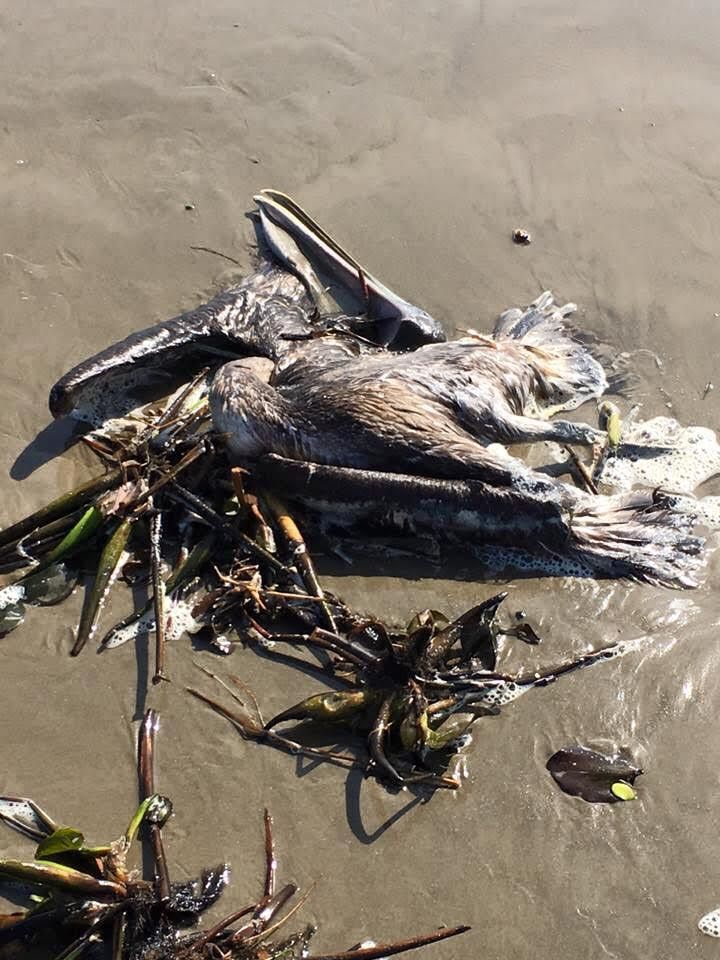Barbara Carlos
February 3, 2016
Violence mars Carnival start
February 4, 2016State wildlife officials are trying to determine why as many as 36 brown pelicans – which are designated as Louisiana’s state bird – were found dead on beaches along Grand Isle this week.
The birds were brought to Baton Rouge Wednesday morning for examination. Scientists suspect they may have died from lack of food, which could be related to this year’s El Nino weather pattern.
“In El Nino years off the western coasts of North and South America seabirds die by the millions, because they can’t get to their food,” said Michael Seymour, avian biologist at the Louisiana Department of Wildlife and Fisheries. “We don’t know that this is the case with these pelicans, but at this time of year there is a pretty high mortality rate of pelicans, especially birds that have only lived a year or two, and are not as skilled at finding food.”
Grand Isle is the only inhabited barrier island in Louisiana. There are no pelican rookeries in the island’s immediate vicinity, although islands closer to Terrebonne Bay to the west and inshore waters of Barataria Bay are home to pelican colonies. There are a dozen or more pelican rookeries in Louisiana coastal waters.
There is also a potential for parasitic infection, Seymour said, or a combination of all the factors cited. He acknowledged, however, that the cluster of so many birds in a concentrated area – along seven miles of the same beachline – “may be more birds than we typically see.”
El Nino is a weather pattern that occurs when warm water from the western Pacific Ocean flows eastward, as has occurred this year.
Photos of the pelicans appeared on a Houma area Facebook group, The Buzz, Wednesday morning. The Buzz’s administrator, Nicole Lirette, confirmed that she was given the photos by someone who had accompanied the person who took them, and was authorized to publicly post them.
Initial reports of dead pelicans first were made Sunday, said Grand Isle Police Chief
Grand Isle Police Chief Euris Dubois said his officers received a call that day alleging that someone on the beach was shooting at pelicans.
“We did find four or five of them,” Dubois said. But there was no indication the birds had been shot, and Dubois said it is possible that a language barrier may have been responsible for that claim. Dead pelicans do end up on the beach from time to time, and the initial find was not considered unduly suspicious.
Then on Monday morning police were checking the beach and found more pelicans, bringing the total to thirty-six.
Dubois said LDWF officials were then called.
Several massive die-offs of seabirds, including an unprecedented mortality event last year involving 100,000 auklets, a type of seabird, in the Pacific Northwest last year, have been thought due to warming ocean temperatures, according to articles in scientific journals and National Geographic magazine.
Warmer waters – whether due to El Nino or other climate change phenomenon, Michael Seymour said – affect pelicans and other seabirds because the fish they eat tend to migrate further out, where waters are colder. The birds have difficulty adjusting and so become malnourished.
Scientists are considering all potential options, Seymour said, while the Grand Isle deaths are being investigated.







